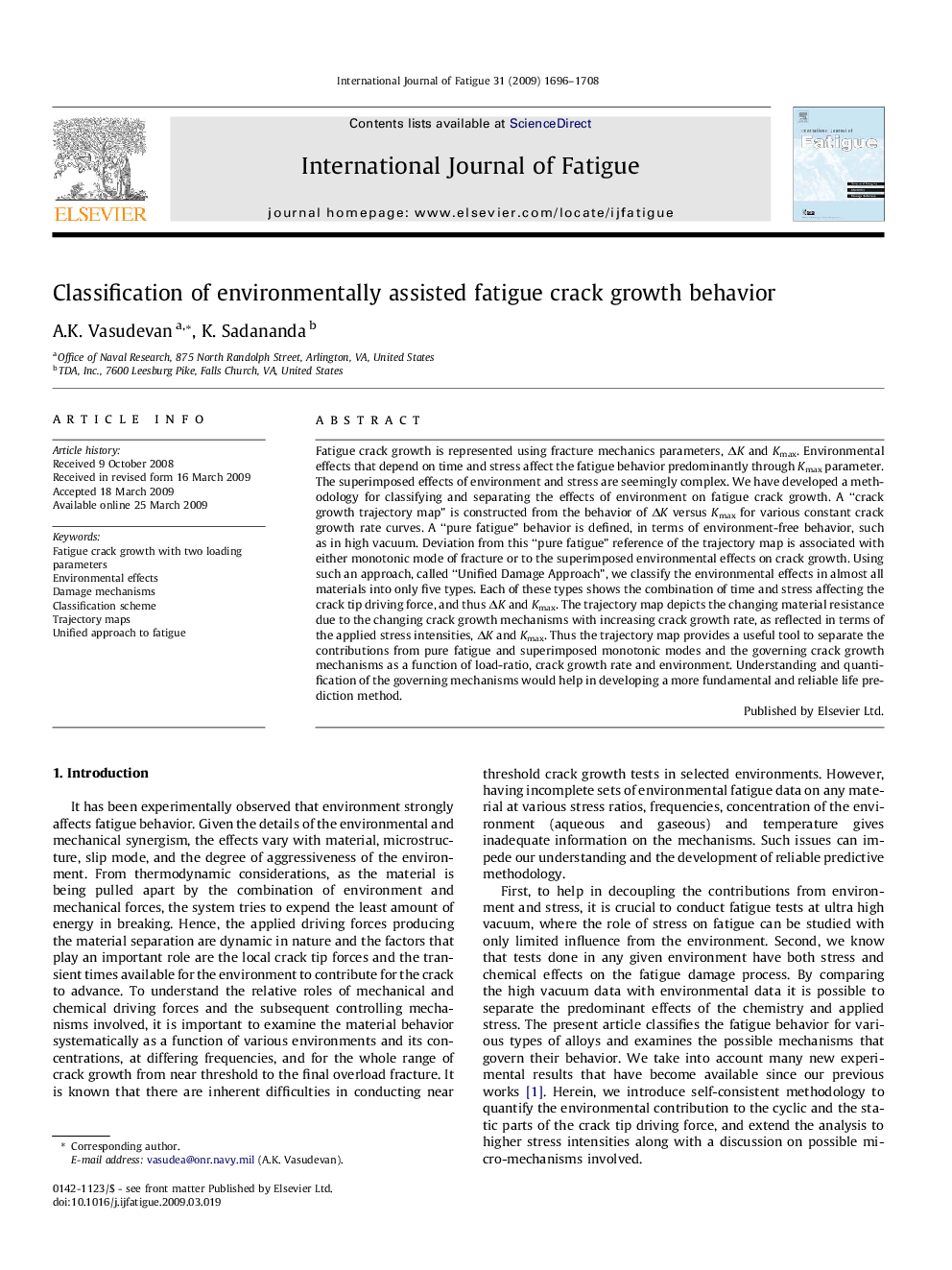| Article ID | Journal | Published Year | Pages | File Type |
|---|---|---|---|---|
| 775642 | International Journal of Fatigue | 2009 | 13 Pages |
Fatigue crack growth is represented using fracture mechanics parameters, ΔK and Kmax. Environmental effects that depend on time and stress affect the fatigue behavior predominantly through Kmax parameter. The superimposed effects of environment and stress are seemingly complex. We have developed a methodology for classifying and separating the effects of environment on fatigue crack growth. A “crack growth trajectory map” is constructed from the behavior of ΔK versus Kmax for various constant crack growth rate curves. A “pure fatigue” behavior is defined, in terms of environment-free behavior, such as in high vacuum. Deviation from this “pure fatigue” reference of the trajectory map is associated with either monotonic mode of fracture or to the superimposed environmental effects on crack growth. Using such an approach, called “Unified Damage Approach”, we classify the environmental effects in almost all materials into only five types. Each of these types shows the combination of time and stress affecting the crack tip driving force, and thus ΔK and Kmax. The trajectory map depicts the changing material resistance due to the changing crack growth mechanisms with increasing crack growth rate, as reflected in terms of the applied stress intensities, ΔK and Kmax. Thus the trajectory map provides a useful tool to separate the contributions from pure fatigue and superimposed monotonic modes and the governing crack growth mechanisms as a function of load-ratio, crack growth rate and environment. Understanding and quantification of the governing mechanisms would help in developing a more fundamental and reliable life prediction method.
